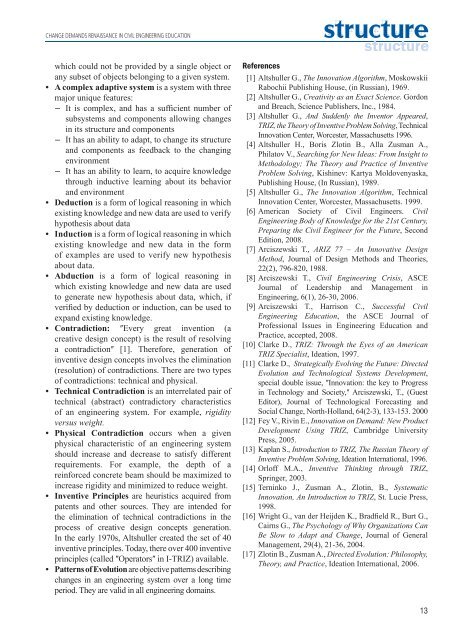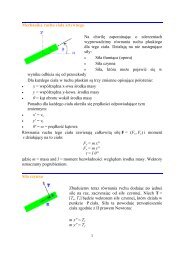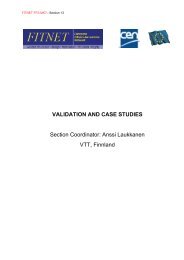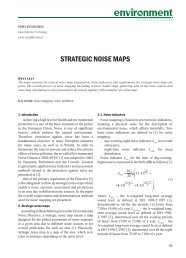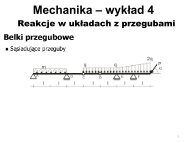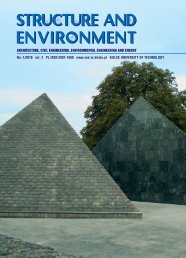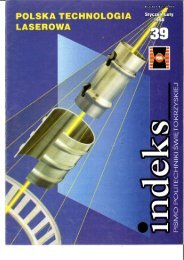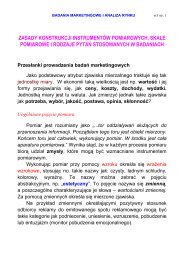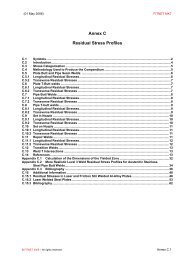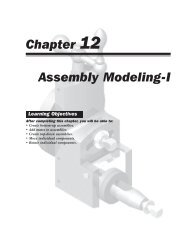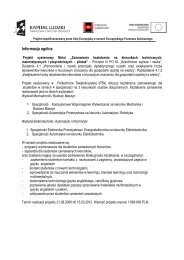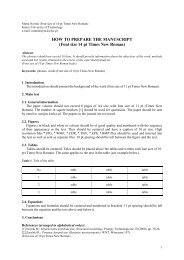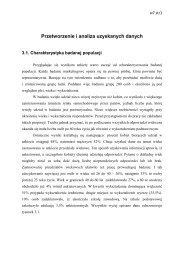STRUCTURE AND ENVIRONMENT STRUCTURE AND ...
STRUCTURE AND ENVIRONMENT STRUCTURE AND ...
STRUCTURE AND ENVIRONMENT STRUCTURE AND ...
Create successful ePaper yourself
Turn your PDF publications into a flip-book with our unique Google optimized e-Paper software.
CHANGE DEM<strong>AND</strong>S RENAISSANCE IN CIVIL ENGINEERING EDUCATION<br />
which could not be provided by a single object or<br />
any subset of objects belonging to a given system.<br />
• A complex adaptive system is a system with three<br />
major unique features:<br />
– It is complex, and has a sufficient number of<br />
subsystems and components allowing changes<br />
in its structure and components<br />
– It has an ability to adapt, to change its structure<br />
and components as feedback to the changing<br />
environment<br />
– It has an ability to learn, to acquire knowledge<br />
through inductive learning about its behavior<br />
and environment<br />
• Deduction is a form of logical reasoning in which<br />
existing knowledge and new data are used to verify<br />
hypothesis about data<br />
• Induction is a form of logical reasoning in which<br />
existing knowledge and new data in the form<br />
of examples are used to verify new hypothesis<br />
about data.<br />
• Abduction is a form of logical reasoning in<br />
which existing knowledge and new data are used<br />
to generate new hypothesis about data, which, if<br />
verified by deduction or induction, can be used to<br />
expand existing knowledge.<br />
• Contradiction: ʺEvery great invention (a<br />
creative design concept) is the result of resolving<br />
a contradictionʺ [1]. Therefore, generation of<br />
inventive design concepts involves the elimination<br />
(resolution) of contradictions. There are two types<br />
of contradictions: technical and physical.<br />
• Technical Contradiction is an interrelated pair of<br />
technical (abstract) contradictory characteristics<br />
of an engineering system. For example, rigidity<br />
versus weight.<br />
• Physical Contradiction occurs when a given<br />
physical characteristic of an engineering system<br />
should increase and decrease to satisfy different<br />
requirements. For example, the depth of a<br />
reinforced concrete beam should be maximized to<br />
increase rigidity and minimized to reduce weight.<br />
• Inventive Principles are heuristics acquired from<br />
patents and other sources. They are intended for<br />
the elimination of technical contradictions in the<br />
process of creative design concepts generation.<br />
In the early 1970s, Altshuller created the set of 40<br />
inventive principles. Today, there over 400 inventive<br />
principles (called ʺOperatorsʺ in I-TRIZ) available.<br />
• Patterns of Evolution are objective patterns describing<br />
changes in an engineering system over a long time<br />
period. They are valid in all engineering domains.<br />
References<br />
[1] Altshuller G., The Innovation Algorithm, Moskowskii<br />
Rabochii Publishing House, (in Russian), 1969.<br />
[2] Altshuller G., Creativity as an Exact Science. Gordon<br />
and Breach, Science Publishers, Inc., 1984.<br />
[3] Altshuller G., And Suddenly the Inventor Appeared,<br />
TRIZ, the Theory of Inventive Problem Solving, Technical<br />
Innovation Center, Worcester, Massachusetts 1996.<br />
[4] Altshuller H., Boris Zlotin B., Alla Zusman A.,<br />
Philatov V., Searching for New Ideas: From Insight to<br />
Methodology; The Theory and Practice of Inventive<br />
Problem Solving, Kishinev: Kartya Moldovenyaska,<br />
Publishing House, (In Russian), 1989.<br />
[5] Altshuller G., The Innovation Algorithm, Technical<br />
Innovation Center, Worcester, Massachusetts. 1999.<br />
[6] American Society of Civil Engineers. Civil<br />
Engineering Body of Knowledge for the 21st Century,<br />
Preparing the Civil Engineer for the Future, Second<br />
Edition, 2008.<br />
[7] Arciszewski T., ARIZ 77 – An Innovative Design<br />
Method, Journal of Design Methods and Theories,<br />
22(2), 796-820, 1988.<br />
[8] Arciszewski T., Civil Engineering Crisis, ASCE<br />
Journal of Leadership and Management in<br />
Engineering, 6(1), 26-30, 2006.<br />
[9] Arciszewski T., Harrison C., Successful Civil<br />
Engineering Education, the ASCE Journal of<br />
Professional Issues in Engineering Education and<br />
Practice, accepted, 2008.<br />
[10] Clarke D., TRIZ: Through the Eyes of an American<br />
TRIZ Specialist, Ideation, 1997.<br />
[11] Clarke D., Strategically Evolving the Future: Directed<br />
Evolution and Technological Systems Development,<br />
special double issue, ʺInnovation: the key to Progress<br />
in Technology and Society,ʺ Arciszewski, T., (Guest<br />
Editor), Journal of Technological Forecasting and<br />
Social Change, North-Holland, 64(2-3), 133-153. 2000<br />
[12] Fey V., Rivin E., Innovation on Demand: New Product<br />
Development Using TRIZ, Cambridge University<br />
Press, 2005.<br />
[13] Kaplan S., Introduction to TRIZ, The Russian Theory of<br />
Inventive Problem Solving, Ideation International, 1996.<br />
[14] Orloff M.A., Inventive Thinking through TRIZ,<br />
Springer, 2003.<br />
[15] Terninko J., Zusman A., Zlotin, B., Systematic<br />
Innovation, An Introduction to TRIZ, St. Lucie Press,<br />
1998.<br />
[16] Wright G., van der Heijden K., Bradfield R., Burt G.,<br />
Cairns G., The Psychology of Why Organizations Can<br />
Be Slow to Adapt and Change, Journal of General<br />
Management, 29(4), 21-36, 2004.<br />
[17] Zlotin B., Zusman A., Directed Evolution: Philosophy,<br />
Theory, and Practice, Ideation International, 2006.<br />
13


